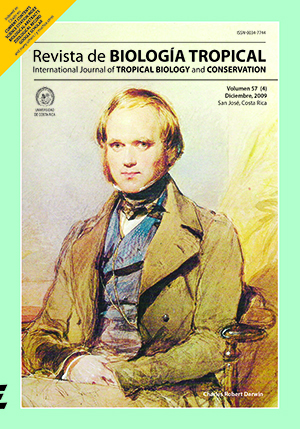Abstract
Changes in land use have generated a new landscape configuration in the Andino orobiome (mountain range) of the tropical Andes, resulting in a mosaic of cultivation and pastures interrupted by small fragments of forest and live fences. This has resulted in an ongoing decrease in the biodiversity of this biome. In the upper basin of the Cane-Iguaque River (Villa de Levya-Boyacá, Colombia), located 2 600-3 000 m above the Cordillera Oriental, over three time periods in 1960, 1984, and 2004, we characterized the structure, patterns, and evolution of the overall landscape and of the live fences (used as tools in biodiversity conservation and considered to be desirable alternatives to nonlive fences in farming production systems) within an agricultural landscape. To do this, we interpreted high-resolution satellite images using a landscape ecology approach and applied landscape map metrics. We found that the natural forests have been transformed by pastures and cultivation, and that although live fences cover only a small portion of the total landscape (4.6%), they have an important effect on landscape structure and biodiversity. There has been an increase in live fences, especially between 1960 and 1984, as well as an increase in their density. However, there has been a reduction in the average length of live fences over the periods that we studied. This could be due in part to changes in the types of agricultural products that have been cultivated in recent years, with an increase in potatoes and a decrease in other vegetables, and also by resource extraction of timber and fuel wood. In the studied area, agricultural production was sustained while biodiversity conservation was improved by the use of live fences. Therefore, live fences should be considered not only as part of an agriculturally productive area, but also as an important element of a multi-functional landscape that contributes to the maintenance of biodiversity and provides resources of economic and ecological interest, decreasing the pressure on natural forest. Improving the network of live fences constitutes an important strategy for the sustainable management of the rural landscape of the Andino orobiome of Colombia and similar areas in the tropics.Comments

This work is licensed under a Creative Commons Attribution 4.0 International License.
Copyright (c) 2009 Revista de Biología Tropical
Downloads
Download data is not yet available.






